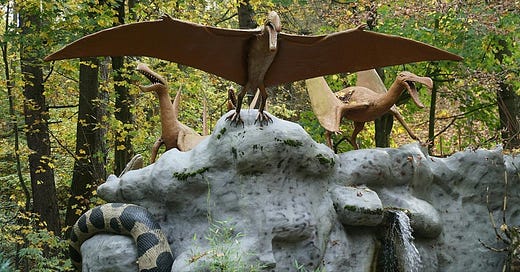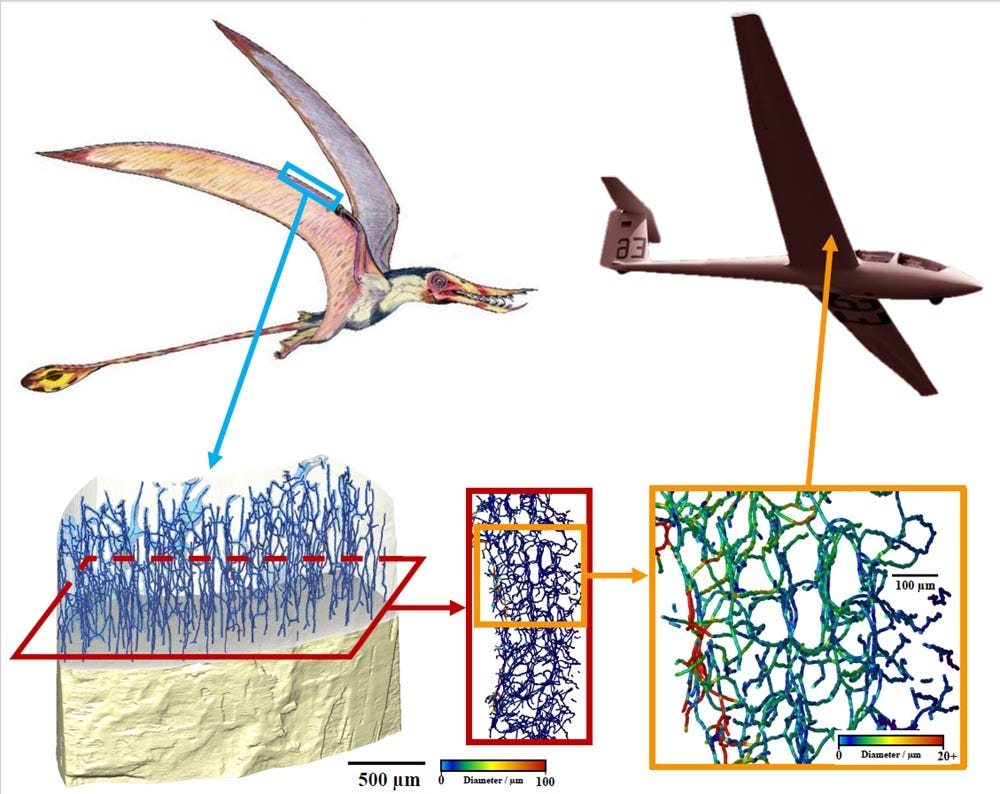Pterosaurs aren't done flying yet
These fossilised flying reptiles still have a few tricks to show modern aviation
ANCIENT flying reptiles called pterosaurs may have been grounded forever in the fossil record, but it turns out they are still far from flightless. Kind of.
No, we're not talking about some Jurassic Park-style reanimation, but some tricks of the evolutionary 'trade' locked away in the structure of fossil pterosaur bones. The intricate micro-architecture could hold clues to making lighter, stronger materials for use in future aircraft.
Scientists have used advanced X-ray imaging techniques to examine fossilised bones of the prehistoric flying reptile at the smallest scale, revealing hidden engineering solutions right in the palm of their hands… or rather their fingers.
They discovered that pterosaur bones contained a complex network of tiny canals. These made the bones both lightweight and incredibly strong – details of its structure that have never been seen before.
Publishing their findings in the journal, Scientific Reports, the researchers say these ancient adaptations could have the potential to start a ‘palaeo-biomimetics’ revolution – using the biological 'designs' of prehistoric creatures to develop new materials for the 21st Century.
“For centuries, engineers have looked to nature for inspiration – like how the burrs from plants led to the invention of Velcro. But we rarely look back to extinct species when seeking inspiration for new engineering developments – but we should,” said the study's lead author, Nathan Pilli, a PhD student at the University of Manchester.
“We are so excited to find and map these microscopic interlocking structures in pterosaur bones; we hope one day we can use them to reduce the weight of aircraft materials, thereby reducing fuel consumption and potentially making planes safer.”
The pterosaurs, close relatives of dinosaurs, were the first vertebrates to achieve powered flight. While early species typically had wingspans of about two metres, later pterosaurs evolved into enormous forms with wingspans reaching upwards of 10 metres.
Such a size means they had to solve multiple engineering challenges to get their enormous wingspan airborne, not least supporting their long wing membrane predominantly from a single finger.
The team used state-of-the-art X-ray Computed Tomography (XCT) to scan the fossil bones at near sub-micrometre resolution. This resolved complex structures approximately 20 times smaller than the width of a human hair, resulting in the 3D mapping of internal structures never before achieved at such resolutions.
They found that the unique network of tiny canals and pores within pterosaur bones – once used for nutrient transfer, growth, and maintenance – also helped protect against microfractures by deflecting cracks, serving both biological and mechanical functions.
Natural design
By replicating these natural designs, the team say that engineers could not only create lightweight, strong components, but could also incorporate sensors and self-healing materials, opening up new possibilities for more complex and efficient aircraft designs.
Indeed, the team suggests that advancements in metal 3D printing could turn these ideas into reality.
“This is an incredible field of research, especially when working at the microscopic scale,” Pilli added. “Of all the species that have ever lived, most are extinct, though many died out due to rapid environmental changes rather than ‘poor design’.
“These findings are pushing our team to generate even higher-resolution scans of additional extinct species. Who knows what hidden solutions we might find.”
With the aerospace industry constantly striving for stronger, lighter, and more efficient materials, nature’s ancient flyers may hold the key to the future of flight. By looking back hundreds of millions of years, scientists and engineers may well be paving the way for the next generation of aviation technology.
“There is over four billion years of experimental design that were a function of Darwinian natural selection,” said the study's senior author, Phil Manning, professor of natural history at the University of Manchester, and director of science at the Natural History Museum, Abu Dhabi.
“These natural solutions are beautifully reflected by the same iterative processes used by engineers to refine materials. It is highly likely that among the billions of permutations of life on Earth, unique engineering solutions have evolved but were lost to the sands of time.
“We hope to unlock the potential of ancient natural solutions to create new materials but also help build a more sustainable future. It is wonderful that life in the Jurassic might make flying in the 21st Century more efficient and safer.”
MC





